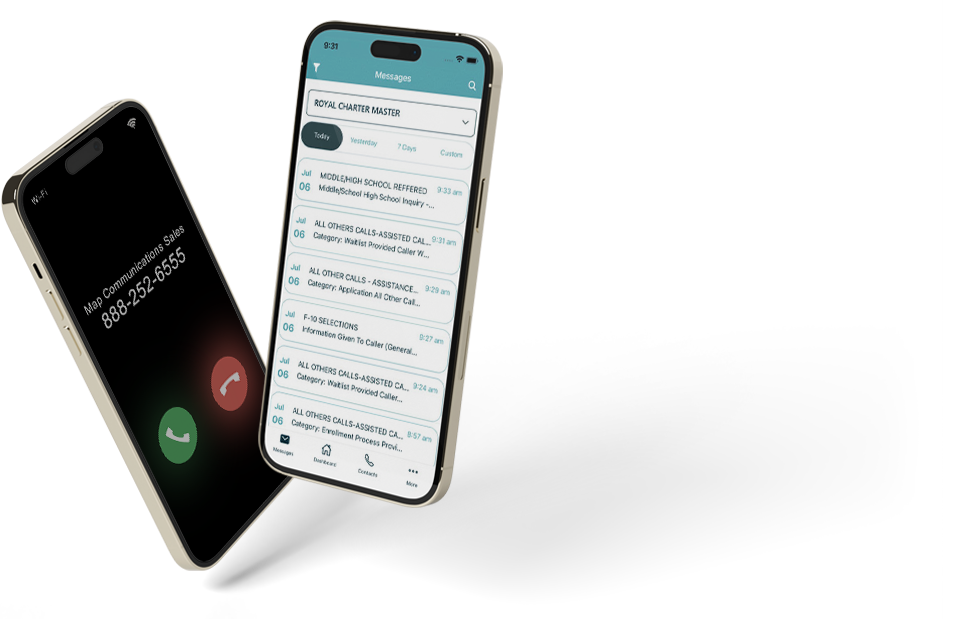
A virtual receptionist is a remote worker who provides customer service and administrative support. They often handle tasks that were once reserved for in-office receptionists. As technology has evolved, more employers are turning to virtual receptionists instead of traditional in-house support.
There are a lot of advantages that come with a virtual assistant receptionist. These professionals typically work around the clock to answer your calls. While traditional receptionists are constrained by the standard 40-hour work week, virtual receptionists work in teams to ensure there’s always a helpful voice ready to greet your callers.
The savings are also worth mentioning. While in-house administrative employees require equipment, training, benefits, and paid time off, virtual receptionists come fully equipped and trained. Businesses do not need to provide benefits or paid time off, and they can scale services up or down based on demand without incurring the extra costs associated with hiring or laying off staff. This flexibility allows businesses to manage resources more efficiently and allocate budgets toward growth and development initiatives.
With a dedicated virtual receptionist, you won’t miss important calls, appointments, or customer inquiries. They ensure all communications are promptly addressed, providing a seamless and professional experience for your clients. This reliable support helps maintain customer satisfaction and enhances your business’s reputation for responsiveness and efficiency.

Share this Image On Your Site
What Does a Virtual Receptionist Do?
A virtual assistant receptionist handles administrative tasks to foster seamless customer experiences for businesses. They work in shifts to provide 24/7 coverage, ensuring that calls are always answered promptly.
Virtual receptionists use intuitive scripts tailored to each business’s needs, ensuring consistent and professional communication. These scripts guide them through various scenarios, reflecting the specific policies and preferred language of the business. This allows virtual receptionists to handle calls as if they were part of the in-house team, providing a seamless experience for callers.
By working from these customized scripts, virtual receptionists can efficiently manage customer interactions, offering the same level of service as an in-house receptionist, often without the caller realizing they are speaking to someone off-site.
Some of their daily responsibilities include:
- Phone Call Answering
- Message Taking
- Appointment Scheduling
- Call Screening
- Call Routing
- Lead Qualification
- Order Assistance
- Technical Support
What Are Businesses without a Virtual Receptionist Missing Out On?
Not every business needs a virtual lobby receptionist, but these professionals are more versatile than you might expect. Without a virtual receptionist on hand, your business misses out on the chance to enhance your customer experience. 24/7 availability and quick handling of inbound calls can go a long way to impress callers.
There’s also the cost savings to consider. Virtual receptionists don’t need office space, equipment, or benefits. Instead, you pay only for their services as needed. A traditional, in-house receptionist will cost you far more in the long run.
Without a virtual receptionist, you may miss valuable leads from calls and inquiries outside regular business hours. Virtual receptionists can capture these leads, potentially increasing your sales and business opportunities.
Virtual receptionists offer flexibility, adapting to your business needs as they change. Whether you need more support during peak times or less during slow periods, virtual receptionists can scale their services accordingly.
With a better understanding of what a virtual receptionist is, it’s easy to see the value they can add to virtually any organization.
When You Don’t Need a Virtual Receptionist
While dedicated virtual receptionists offer a wide range of benefits, there are certain situations where a business might not need their services. If your business receives a very low volume of calls, emails, or customer inquiries, the cost of a virtual receptionist might not be justified. In such cases, handling communication in-house may be more efficient and cost-effective.
Businesses that thrive on personal, face-to-face interactions with clients, such as boutique shops, small local businesses, or high-end service providers, might prefer to maintain a personal touch by having an in-house receptionist. This approach can help in building strong, personal relationships with clients.
For businesses that operate strictly within standard business hours and have minimal need for after-hours support, the added benefit of 24/7 availability provided by a virtual receptionist may not be a significant advantage.
Certain businesses might encourage direct access to specific team members rather than routing through a receptionist. This can be common in consultancy firms, personal coaching, or freelance services, where clients expect direct communication with their service provider.
What’s the Difference Between a Virtual Receptionist and an Answering Service?
Virtual receptionists and answering services have a lot of similarities. However, there are a few subtle differences. Some organizations opt to hire an answering service over a virtual receptionist, because their requirements are fairly basic. They just want a live person to answer their phone, reassure their caller that they are a priority, take a message, and deliver it to the right person. Pretty simple.
Those who opt for a virtual receptionist service often require a bit more complexity in their call handling, which may include some of the tasks bulleted earlier. Realistically, a virtual receptionist often provides an answering service with the capabilities to go above and beyond.
Both options offer stellar customer service experiences. These services each enable you to make sure every call is answered quickly by a real person, which puts your callers at ease. By not putting them on hold or sending them to voicemail, they are far, far less likely to hang up and dial a competitor.
Basically, a virtual receptionist service is a more involved version of an answering service. Many companies find that their call handling requirements are met by some version of these services.
How to Set Up Your Virtual Receptionist Service
If you’re considering setting up a virtual receptionist service for your office, there are a few things to know upfront. Check to understand exactly what you’re getting; if you require 24-hour coverage, for example, you’ll want to make sure the package you select includes around the clock availability. Not all virtual receptionist services are available 24/7, so make sure to ask.
Also, be thinking of the policies and procedures you’d like your virtual receptionist to follow. If a caller asks for you by name, for instance, would you prefer the receptionist transfer the call or take a message? Are you open to taking calls when you’re in the field, and if not, how do you prefer your calls to be routed? Understanding your preferences and limitations can help guide your decision-making process.
Your virtual receptionist service will include an account manager that can walk you through other considerations when you set up your partnership. They will work with you to create a customized call script and learn about your organization’s goals. Ultimately, a virtual receptionist will work to provide the kind of customer service experience you’d provide every time – if only you had the time!
Give Map a Try Today
Virtual receptionists bring true value to businesses large and small. If you’ve been curious about how such a service would fit into your professional lifestyle, consider trying Map on for size. Employee-owned and operated in the United States, Map has three decades of experience providing virtual receptionist services to our clients across the country (and beyond).
New clients can give Map a try by signing up for a free, week-long trial of our live receptionist service. It’s a fantastic preview of the kind of assistance we can bring to your team. Get started now by giving us a call or filling out this form!
Related articles you might be interested in:
Five Ways a Virtual Receptionist Frees Up Your Schedule
Deciding Between an In-House and a Virtual Receptionist for Your Business
Incorporating a Virtual Receptionist into Your Business Strategy


